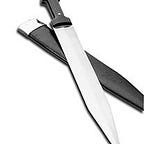CASTING A MEDIEVAL MAGIC SPELL WITH YOUR COSTUME
Also known as Middle Ages, the Medieval Period was a definitive time in the history of Europe, spanning over a millennium, from the fifth century to the fifteenth century. A medieval theme for Halloween is quite popular and loved, for it is an incredibly diverse space for experimentation and exhibiting nostalgic grace. But, owing to lack of documentation and few authentic garments surviving time, choices and ideas pertaining to this age are perplexing and tricky.
If you are sure that donning medieval costumes for women will soothe your soul and there is not much time you have in your hands, read our article for a rudimentary research, and as warm-up for creating your costume!
CLOTHING AND SUMPTUARY LAWS
Stretching from the fall of the Roman Empire to Renaissance, the Medieval period is divided into three ages: the Dark Ages (5th to 11th century), the Early Gothic period (11th to 13th century) and the Late Medieval period (13th to 15th century), throughout which fashion and arts evolved.
The Dark Ages were times of plain and crude clothing, heavily influenced by the Classical Greek and Roman styles, and the women typically wore loose, full tunics or kirtles over sleeved, tight-fitting tunics. Woolen and fur were commonly used for the outer layers and linen was used for the undergarments. With the development of trade and travel, and the occurrence of the Crusades, a mingling of cultures ensued, bringing in color and complexity form the Middle East. Thus, from the 11th century, stylishness and luxury began to hold importance when it came to medieval women costumes. For the nobles who could afford enormous sizes of garments and silk, velvet, and gold, the dresses began to flow and flare into bliauds, and the figure of the body began to be accentuated with belts, and fashion experiments with headwear became commonplace. By the late Middle Ages, Sumptuary Laws were instituted by the Church to uphold the social hierarchy through fashion, and also check pretentious or objectionable display of wealth by the rich and the affluent bourgeoisie. Hence, before you browse through collections online, it helps to have basic guidelines for your costume, based on the exact period and social class of the Middle Ages:
PEASANTS AND SERFS
If you want to keep it simple yet striking, the ‘working class’ including peasants and serfs (mining, forestry) is the option we recommend for you. Go for a loose or ill-fitting tunic or kirtle, or a DIY burlap wrap. Most colors would work for this medieval women’s costume, since the lower classes used dyes from plants grown in their backyard and sometimes, expressed material indulgence. Add a layer of a black corset or lace-up bodice for more fun, and for the hair, try a grungy braid that does not disturb you, and cover it up with a scarf. Complete the look with flat leather sandals or go barefoot, and a few streaks of dirt and grease here and there.
NOBILITY
A member of the nobility was elegance and extravagance personified, so, the best idea for a regal medieval costumes for women would be to opt for long velvet or silk gown in a hue of royal blue, red or gold, along with a ‘pannier’ or ’girdle’ to give the appearance of a wider hip and a longer waist, and embellish it as you like it with laces, embroidery patches, and jewelry. Go for a chic hairstyle and some fun headwear, such as a crown or, a cone-shaped hat with a dropping veil, and comfy, dashing poulaines, sandals or heels for the footwear.
Jewel-cutting and jewelry-making were in their infancy for a large part of the Middle Ages, and hence, the most commonly used ornaments were unsophisticated necklaces, rings, brooches, crowns and tiaras, and belts or girdles. Despite this simplicity, along with headwear (hats, caps, veils, and wimples), they were considered extremely valuable and to be representatives of social class, therefore, choose your jewels wisely.
Before you finalize on your medieval women’s costume, remember that you are not supposed to wear pants as your outer-garment for the bottom. And if you are thinking of going for an extremely minimalistic old-school look, you can settle for a modest look with the ‘unmentionables’ or undergarments that served as work wear and home-wear. These included under-tunics, stockings, and under-pants, made of linen, hemp, or cotton, which were worn by one and all, varying only in the quality of the cloth. Sport a few tools and personalized embellishments alongside these, and surprise people with your unruffled attitude.
For more help and ideas, do check out Costumes and Collectibles’ Women Medieval Costumes & Accessories. And get back to us, to let us know how the party was!
